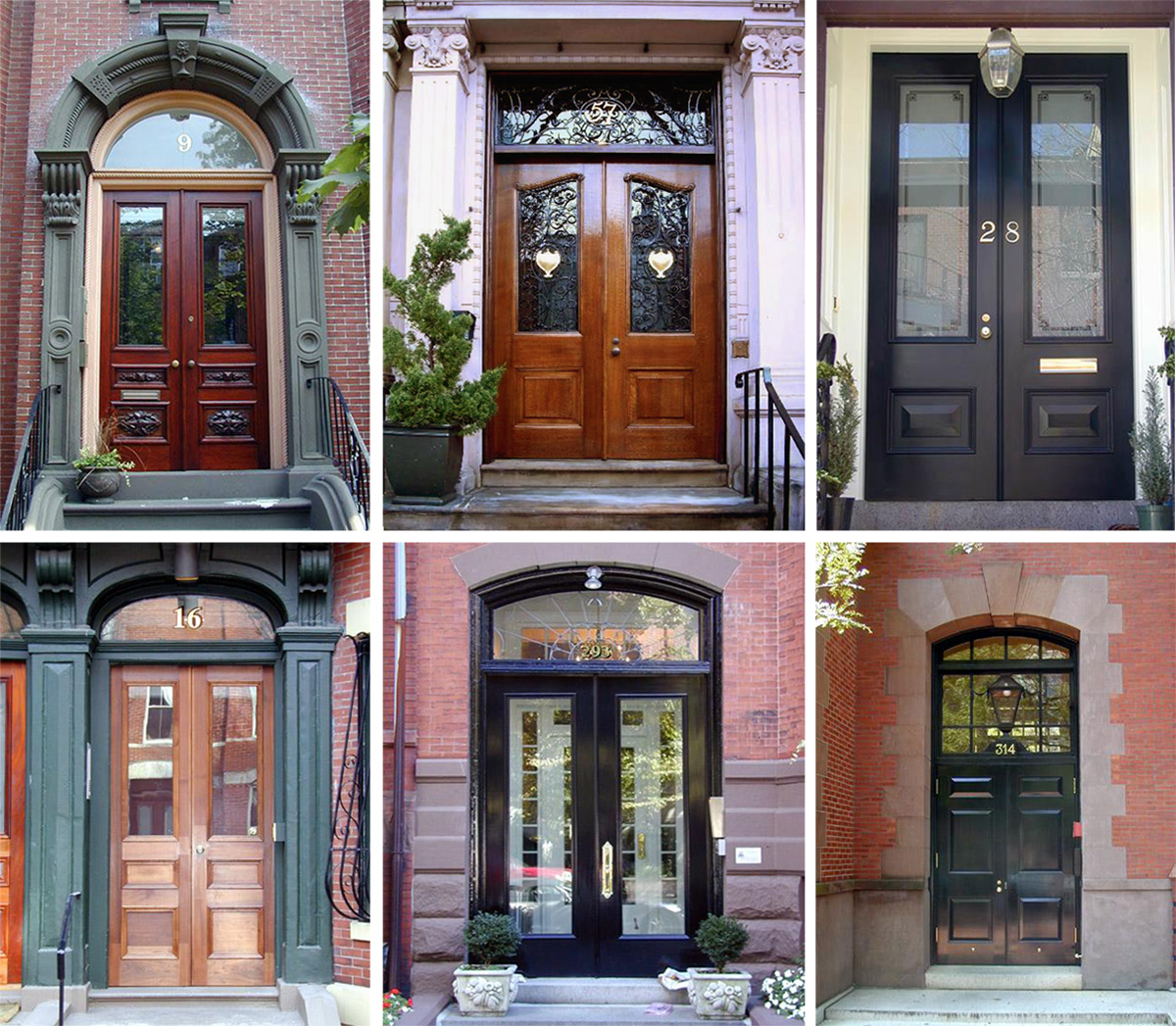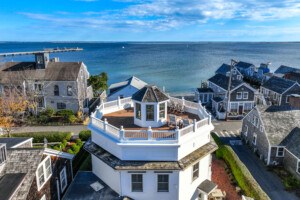What It’s Like to Build Boston’s Doors

Completed doors / Photos courtesy of John Carlton
Breathtaking brownstones and brick beauties line many of Boston’s historic streets. Yet, the iconic double-leaf doors providing entrances to them are a marvel of their own.
A surprising amount of those doors are the same ones that were installed when the grand buildings were constructed. Others are expertly crafted recreations. There happens to be one person who’s created a business out of both of those things. John Carlton, owner of Brighton-based Historic Door, restores and recreates the classic portals found in Back Bay, the South End, Beacon Hill, and Charlestown.
A carpenter by trade, Carlton has also worked as a cabinet maker and a furniture maker. He got his foot in the door business when a customer requested he make a historic door to replace a damaged one. It seems the opportunity opened the door to his new craft.
“In 2005, I decided that was the only thing I was going to do—make new historic doors and also restore the ones that were restorable,” he says.
Carlton learned how to create doors from a master woodworker in the shop he had been working in at the time. He explains he was inspired by that first customer, but his interest was solidified when he realized his teacher seemed happiest when working on door jobs.
“And it felt like there was an opening in the market,” he says. “I know as soon as I advertised I started getting calls right away.”
Today, Carlton is a one-man show operating a niche business. He completes everything from the door’s design, construction, and locks to its finishing and installation. While he’ll sometimes subcontract a wood turner for decorative carvings, his wide array of skills make for slim competition.
“It’s 100-percent custom, so there’s this very close connection to the project and to the customer,” says Carlton, who works directly with homeowners. “You’re really creating something that takes a lot of skill and experience to recognize what you’re dealing with.”
Carlton compares his work to that of an antique restorer, which hits the nail on the head when you consider that some of the oldest doors he works with date back to the 1830s. By combining the skills of a furniture maker, antique restorer, and architectural historian, Carlton approaches doors as a well-rounded expert.
The 56-year-old estimates he spends about 70 percent of his time creating new doors and the other 30 percent restoring original ones. In instances when a home isn’t already outfitted with an authentic door, Carlton has to do a bit of detective work to figure out what an antique model should look like. This is mainly completed during strolls around the neighborhood—Carlton studies neighbors’ doors to figure out how best to design a new door.
Unlike modern entryways, the portals of yesteryear contain a host of uncommon details. For one, they’re significantly thicker than new doors. Some include beveled and etched glass in windows, and almost all of them are trimmed with bolection molding, a style of molding that protrudes beyond the panel of a door. Carlton also selects authentic-looking knobs and locks.
From start to finish, Carlton estimates the restoration of an old door takes one to two months. The creation of a new door takes a few months longer, but Carlton says he spends about 128 hours in his workshop to complete a single door.
His pride and joy is a door he completed along one of the city’s most elite promenades.
“It’s the most spectacular thing I ever did: 57 Commonwealth Avenue,” he says.
Made of quarter-sawn white oak, the door has custom carvings and turnings as well as intricate blacksmith work. Carlton placed the original blacksmith panels, complete with gold leafing, in the new doors, and outfitted them with top-of-the-line door knobs from E.R. Butler & Co.
As Carlton speaks excitedly of his fanciest doors to date, he underscores his love of the craft.
“It’s a combination of all the finer skills in woodworking,” says Carlton. “And the ability to match and recreate something that was once there.”
Plus, he adds, it’s not lost when his customer shuts the door, so to speak.
“I like it because it’s the public face of a building and I get to admire my work,” he says.



